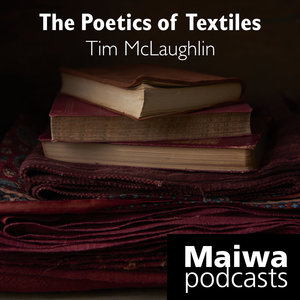On Saturday October 27th, 2018, Charllotte Kwon and Tim McLaughlin delivered the THREADS lecture — "Kinds of Blue: The Natural Indigo Revival." Each year the THREADS lecture presents some aspect of the work of the Maiwa Foundation. This year the lecture followed up Maiwa's presence at the 2017 Indigo Sutra conference in Kolkata, India with details of teaching dye technique in rural Bengal.
The lecture also included an historic survey of Indigo use in India. From it's early discouragement on clothing worn by Brahmins to its ascendency during the time of the Mughals, to its world dominance during the British Raj, to its industrial synthesis at the close of the nineteenth century. All aspects of indigo's history influence how it is used, perceived, and appreciated today.
See all REVIEWS on the Maiwa Blog.


























































